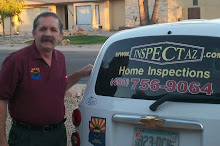Is the condition of the home killing your deals?
To comply with the Arizona Home Inspection Standards of Professional Practice, Arizona Licensed Home Inspectors are required to report on, and identify the condition of over 80 items/components in the inspection report.
Common Items/defects that I find on 90% of the homes I inspect, and that I am required to report, that can often be corrected or repaired prior to the inspection, at little to no cost.
*** Dirty AC/Heating fitlers
*** Burnt out light bulbs
*** Tub and sink stoppers missing
*** Slow draining sinks and tubs
*** Interior doors that need adjustment to latch
*** Dishwasher Hi –Loop missing
*** Anti-tip devices missing on free standing ranges
*** Loose toilets
*** Moldy caulking in the showers
*** Noisy exhaust fans
*** Missing outlet and switch covers
*** Windows that need adjustment to slide or lock properly
*** Anti-siphon devices missing on the exterior faucets
*** Bushes or trees that need trimming to prevent contact with the homes exterior walls
*** Minor adjustments of the grading to provide proper water drainage away from the foundation
About me…
I have over 30 years building construction experience, been a full time Arizona licensed Inspector for the past 12 years, and have personally completed over 5,000 full home inspections in Mesa, Tempe, Chandler, Phoenix, Scottsdale, Queen Creek, Sun Lakes, Gilbert AZ
ASHI Certified Inspector #206929
http://www.ashi.org/
Central District chairman for the local Arizona ASHI chapter 2006-2012 .
http://www.azashi.org/
Arizona Board of Technical Registration Enforcement and Advisory Committee Member.
http://www.azbtr.gov/
For additional information about me, my services, my inspection fees, and to view my sample report. Visit my website ….
http://www.inspectaz.com/
If you have any questions about a questionable item on a property that you have listed, or if your client has a question on a home they are considering purchasing, your call or email is always welcome for a no obligatiion, same day, free phone or email consult.
Email
dan@inspectaz.com Phone 480-756-9064
Angies List Super Service Award 2010-2011- 2012
www.angieslist.com
Mesa / Phoenix AZ Certified Home Inspector # 38440



